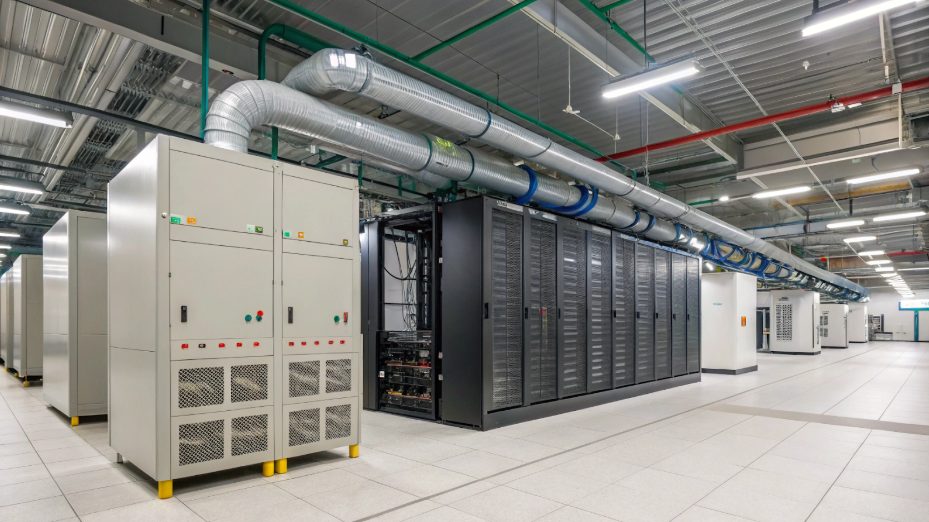Innovative Models for Data Center Waste Heat Reuse

Hong Kong data centers, as critical pillars of the city’s digital infrastructure, handle massive computing loads daily. Yet, their operation generates substantial waste heat, a byproduct long seen as a challenge. This article dives into innovative models for reusing, building on insights from these facilities and reusing waste heat from data centers is not just a sustainability goal but a tech frontier worth exploring.
Tech Innovations Redefining Heat Recovery
Advanced technologies are turning excess heat from data operations from a problem into a resource. Let’s break down the cutting-edge solutions making waves:
- Waste Heat to Power Conversion: This tech leverages thermoelectric generators and organic Rankine cycles. Thermoelectric materials, when exposed to temperature gradients from server racks, generate electricity via the Seebeck effect. Organic Rankine cycles use low-boiling-point fluids to drive turbines, converting heat into mechanical energy then electricity. A local trial saw 15% of waste energy converted to on-site power, cutting grid reliance.
- Enhanced Heat Pump Systems: Next-gen pumps with variable refrigerant flow (VRF) systems boost coefficient of performance (COP) to 4.5+. They capture low-grade heat from cooling loops (30-40°C) and upgrade it to 50-60°C, suitable for various applications. One such facility reduced external needs by 30%.
Unconventional Application Scenarios
Beyond traditional uses, the excess use from computing facilities finds novel applications, especially in the unique urban landscape of Hong Kong:
- Urban Agriculture Integration: Limited land drives vertical farming here. Excess warmth from data operations, distributed via insulated ducting, maintains greenhouse temperatures at 22-28°C, ideal for leafy greens. A pilot project paired a Kowloon facility with a rooftop farm, reducing costs by 40% and increasing crop yield by 25%.
- District Heating Networks: In dense areas, retrofitting existing pipelines to carry excess energy from these centers to residential/commercial buildings works. Heat exchangers transfer thermal energy to the district loop, providing hot water and space heating. A test in Mong Kok showed 80% of a facility’s waste could serve 500+ households.
Collaborative Ecosystems for Utilization
Innovative partnerships are key to scaling the reuse. Local data facilities are pioneering new collaboration models:
- Tripartite Public-Private Partnerships: Involving operators, utility firms, and urban planners. Operators supply heat, utilities manage distribution, planners integrate into city infrastructure. A local initiative under this model cut carbon emissions by 12,000 tons annually.
- Heat-as-a-Service (HaaS): These centers monetize the excess use by offering it as a service to nearby facilities. Pricing is based on thermal output, creating a new revenue stream. A Tsim Sha Tsui facility using HaaS increased annual income by 8%.
Challenges and Technical Hurdles
Despite progress, several obstacles remain in maximizing the reuse:
- Thermal Loss in Transmission: Long-distance heat transport suffers 15-20% loss. The city’s compactness helps, but insulated pipes add 10-15% to project costs.
- Load Matching Issues: Heat output is constant, but demand fluctuates. Smart storage systems (e.g., phase-change materials) can bridge gaps but increase complexity.
Case Study: Urban Heat Reclaim Project
A leading local data center deployed a hybrid system combining thermoelectric generators and a district heating loop. Key outcomes:
- 2.3 MW of waste energy converted to 350 kW of electricity, powering on-site lighting.
- Remaining heat supplied to 2,000 nearby apartments, reducing their gas usage by 40%.
- ROI achieved in 4.2 years, beating initial projections by 8 months.
Future Trajectory: Tech Convergence
Emerging trends point to exciting advancements:
- AI-Optimized Distribution: Machine learning algorithms will predict demand and adjust the flow in real time, cutting losses by 30%+.
- Hybrid Energy Grids: Integrating excess heat with solar and wind to create resilient microgrids, critical for the city’s energy security.
Conclusion
Reusing waste heat from data centers is no longer a niche concept but a viable path to sustainability. Hong Kong data centers, with their unique urban setting, are proving that innovation, collaboration, and tech integration can turn a challenge into an opportunity. As the industry evolves, these models will set benchmarks for global sustainability. Embracing data center waste reuse is not just good for the planet but smart business in the digital age.

